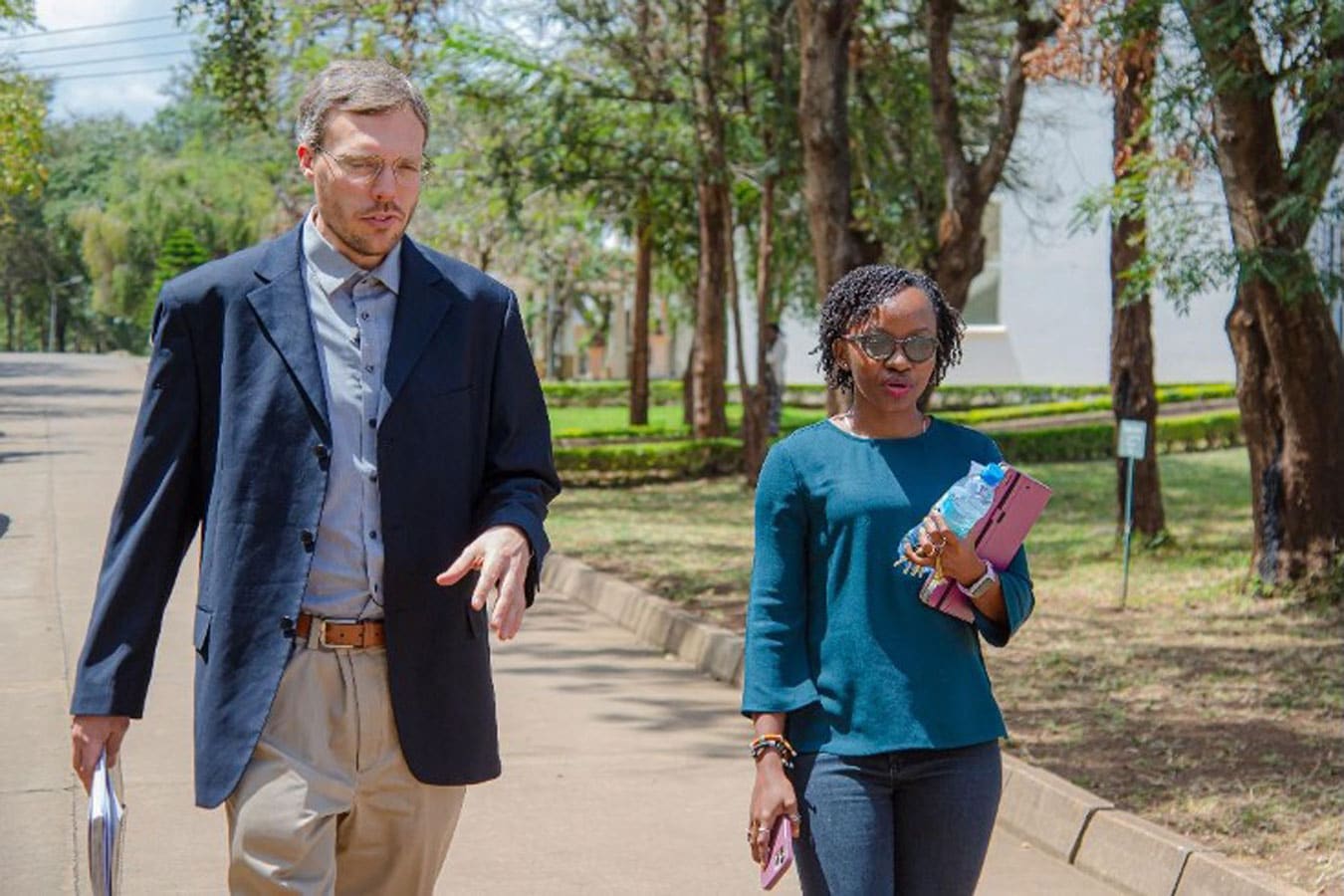Dr. Neema Mduma was poised and confident as ever when Grow Further checked in with her recently. As one of the first recipients of a Grow Further grant, she and her colleagues are busy pushing forward with their vision: launching a new innovative tool to help smallholder farmers grow more food.
“My team and I are going to work very hard in order to ensure the achievement of this project,” she told us. Mduma and company are also very busy these days—that explains why it took us some time to arrange a call with her, though she graciously found a free window to connect. In fact, she is about to get busier, so perhaps the timing of our talk was perfect.
Dr. Mduma is a lead researcher at the Nelson Mandela African Institution of Science and Technology or NM-AIST. Of the more than 700 applications Grow Further received in our first call for proposals, hers was one of two we funded several weeks ago. Expressing NM-AIST’s deeply felt gratitude, Mduma said the Institution is wasting no time now that it has the funds in hand needed to support its important work.
The biggest part of this project will be the data collection; that is the part which is very serious.
So far, we have already conducted inspection meetings between team members and stakeholders in agriculture in order to develop an action plan, and by next week we are planning to start training on how to use the data collection tool,” she explained.
The start of something big
What Mduma was referring to is NM-AIST’s winning idea—a smartphone application that smallholder farmers can use to detect the earliest signs of crop diseases and pest infestations. Developing the basic bones of the app will be the easy part; now comes the real work, she explained.
The researchers at NM-AIST aim to collect more than 500,000 data sets, mainly images of the symptoms of plant diseases, especially diseases that plague maize farmers. They also want to gather several thousands of images and data on how farmers can detect when pests have invaded a field—like the tell-tale signs of bite marks on stems and leaves, for instance.
The data will be used to train a machine learning-based computer model on how to tell one disease apart from another. So much data is required that NM-AIST needs help from the very farmers it hopes to one day assist with this groundbreaking smartphone app.
The first step, Mduma said, is for NM-AIST to train farmers on how to gather the data. From there, they will collect the datasets as they are generated from the field in real time. The task won’t be completed overnight, Mduma cautioned.
“Yeah, it might take a long time—at this stage, it could be six to seven months,” she predicted. “But most of the time the issue is to find the disease, the exact disease that we want.” They also have to be sensitive in their data collection exercise. For example, any personal information related to where data was collected and by whom must be redacted to protect the privacy of cooperating farms and farmers.
Hitting the ground running
Mduma said her team has already identified the smallholder farms where the first rounds of training and data collection will occur. The plan is to first work with farmers in irrigated fields. The seasonal rains in Tanzania are just beginning, she explained, so it will take a bit of time for maize crops at rain-fed fields to mature enough for data collection. None of this poses a problem to NM-AIST’s work on the app, she insisted.
“The timing is not bad because the rains have just started, so other farmers, they’ve started to plant,” Mduma said. “We are going to handle the season very well.”
While they are kept busy training farmers and collecting data, NM-AIST plans to prepare the enormous computing power they’ll need to process the data as it floods in.
“We are going to buy computers as is available in our budget,” Mduma said. “That will help with data processing and everything related to writing the machine learning models.” Getting the right equipment will be a critical piece of this puzzle. This means purchasing and setting up computers capable of processing the massive volume of data fed to them. These new machines must also be capable of yielding the power of the internet for “high-performing execution of the data because we are talking about a large amount of data that we are going to collect,” she explained.
More to come
We are looking forward to checking in with Dr. Mduma and NM-AIST periodically as they proceed with their vision. The next several months will be grueling and time-consuming, but ultimately it will be worth it, Mduma said. Once they have the 500,000-plus data points needed to build a powerful plant disease detection system, it will be off to the races, she said.
“The biggest part of this project will be the data collection; that is the part which is very serious, and it will take a lot of time,” Dr. Mduma explained. “Once we have the data then it will be very easy,” she confidently added. “It will be all about training the model, enhancing the model so that it will perform well.”
— Grow Further
Photo credit: Dr. Neema Mduma and Grow Further founder and CEO Peter Kelly at the Nelson Mandela African Institution of Science and Technology. True Vision Productions.




